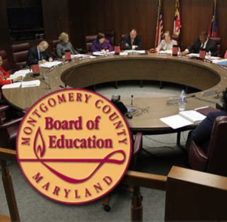The county’s Charter Review Commission is taking up a proposal that changes the way the County Council’s president is determined. Currently, the council members themselves elect the council president. (Interestingly, in his three terms as a council member, County Executive Marc Elrich was never vested with this office by his counterparts. The council president’s term has customarily been one year, although I couldn’t find anything in the county’s charter that mandates this term.
The council president has one important power: the ability to draw an automatic 10% increase in salary. Other powers include conducting the council’s meetings, coordinating legislation and appointments with the county executive, and other functions that can, depending on the circumstances, have some material impact.
In the proposal before the Charter Review Commission, the voters will elect the council from one of the presiding at-large members, and for a four-year term. When I read this, I asked my physician for a stronger dose of migraine medication.
Since the referendum Question D in 2020, we have established quite clearly that our four at-large members are elected through voter dilution, because a small group of entitled voters elects all of the winners. Any multi-member at-large election determined by plurality win has been excoriated by Supreme Court justices from Sandra Day O’Connor to Ruth Bader Ginsburg as well as by civil rights leaders such as Harvey Milk and John Lewis. Furthermore, none of our at-large members passed the required 20% threshold to consider their victories in primary elections as legitimate.
Not once has the county’s political leadership produced a single voting rights activist that condones our at-large elections; if they did, I could bring 20 who denounce them.
We are now deliberating the proposal to allow that same entitled demographic to “elect” a council president from among the at-large members they similarly “elected”—through voter dilution.
Last November CM Evan Glass endorsed ranked-choice voting for local elections, a protocol that provides legitimacy to otherwise plurality wins. Not everyone is happy with RCV, and for them other protocols are available, such as proportional tabulation and abolishing the multi-member at-large contingent entirely. Regardless, before we even think that an entrenched demographic should be able to elect a council president from among sitting at-larges, we need to be sure that those at-large winners are an expression of voter preference by accruing convincing wins at the polls.




